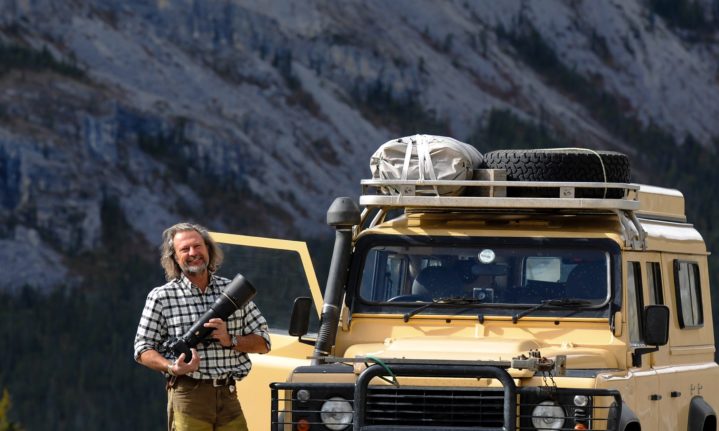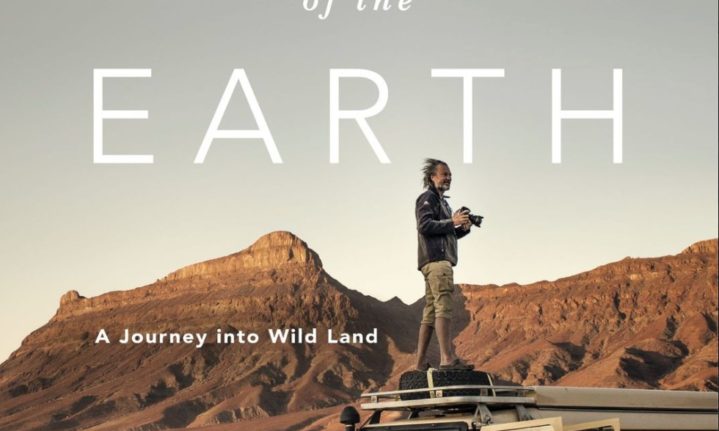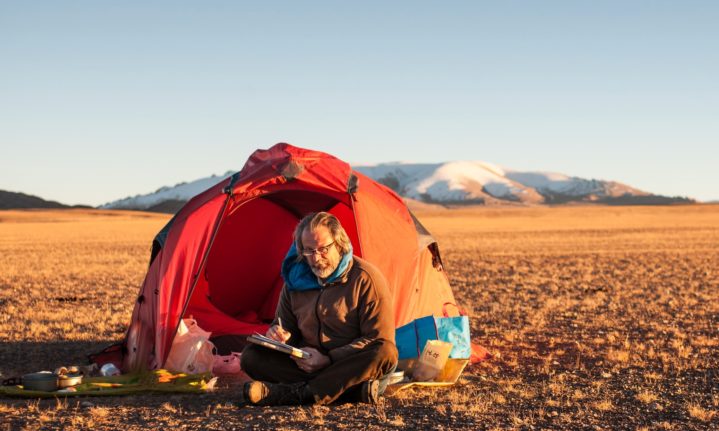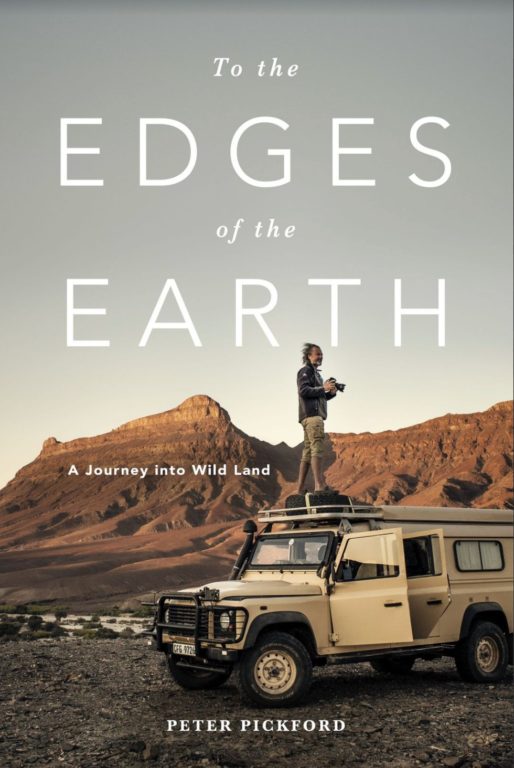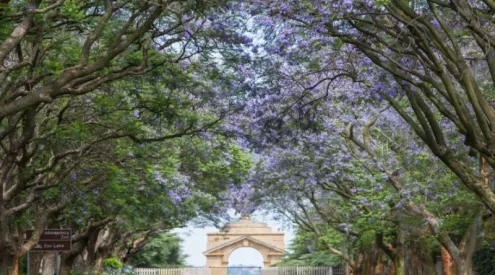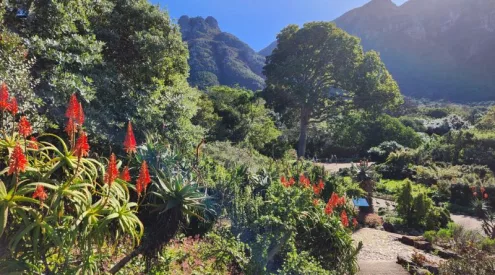In 2011, Peter and Beverly Pickford took their specially kitted Land Rover on an adventure covering all seven continents to seek out Earth’s last wild lands. Their photographic book Wild Land (showcased in the May issue of Getaway) is the fruit of those labours, while Peter’s new book, To the Edges of the Earth, tells the story.
Pictures supplied by Peter and Beverly Pickford

Peter: In our lifetime we’ve seen dramatic change in wilderness, and this is something we wanted to address. We wanted to make a photographic book that could convey the importance of conserving the last wildernesses on Earth. We had previously driven across Africa twice and have spent 40 years focused on Africa-centric projects. We were ready to take our conservation concerns to the world.
Bev: Wild Land was easier for us because we were both flat-out involved in the same thing, but Peter began writing To the Edges while we were on the project. There would be hours each day when he would sit under a tree or in the vehicle if it was snowing, and I would just do research, cook the food, and do the logistics. If you have a story in you, it just flows…It was very simple for us; Peter needed to write and I supported him with research.
Peter: When I was a schoolboy we went on a trip to Botswana. We were in a big Ford F250. There was a massive rain storm while we were in Moremi, and we slipped off the side of the road into the water somewhere near Third Bridge. We just couldn’t get the vehicle out, and we didn’t see anyone for three days before a vehicle came along. A few years ago we were at the bridge near where that happened photographing birds, and we had to move aside for perhaps 20 vehicles in the space of three hours. If that’s happened on the small spectrum of what we’ve experienced, on the global spectrum it’s immense, and it’s so important that we conserve what still exists. That was our drive.
Bev: We also felt we needed to see these places for ourselves. We looked for continuous areas of wild land, land that was bigger than the single entity of a national park or reserve.

Peter: It was important to us that if people were present, they would be in association with the land rather than domination of it. In other words just like any other animal on Earth, just existing. That reduced the scope of the places we could cover, then we further reduced it by choosing one destination per continent. It took us four and a half years to do the field work, mostly in our specially adapted Land Rover that we shipped around the world. It gave us access to remote places. It’s a remarkable vehicle, it’s been across Africa twice and around the world once…except to Antarctica and China.
Bev: It was so wonderful to arrive on a strange continent, in a strange harbour, and to just get in our vehicle and drive away.
Peter: The more remote a place, the less information there tends to be, which was an indication that we were on the right track. Not a lot of people had been out there or mapped these places, and we struggled a bit to find satisfactory destinations. We are passionate about being in wilderness on our own. We were looking to be way outside any structure or formalities. To wake up and know there’s no one within 100km…that’s when my tail starts wagging. One night Bev and I were sitting at home in the mountains looking over the Robertson Valley in the Western Cape, and it was dark. It dawned on us then: light. We realised we needed to look at satellite maps to see where there were no lights at night, and that proved to be decisive for us.

Bev: In Asia, Tibet was absolutely remarkable, but challenging. We were camping in –6℃ weather, sometimes –12℃, at 5 000m. We hadn’t done much acclimatising, and it’s difficult to breathe at that altitude. We’d say, ‘Oh my gosh, there’s a wolf!’ and try to run off like we usually would to capture it, but we couldn’t. You’ve got to take one slow step at a time up there. Despite hardships, in Tibet we almost felt as though we were the first people there, it was remarkable.
Peter: Europe was difficult. We finally settled on north-western Europe, and spent about two months exploring the area but we found it was way too developed for what we were looking for. We wanted pure, natural environment, so the Svalbard archipelago became the European section.
Bev: The extreme cold in Antarctica was also a challenge. We’d be out there for hours up to our knees standing or lying in the snow. If you keep moving, you keep warm but I remember my hands being frozen to my camera. So you take a shot and then you have to put the camera inside your jacket to get the frost off it, put your gloves back on, warm your hands and repeat to keep the battery warm.
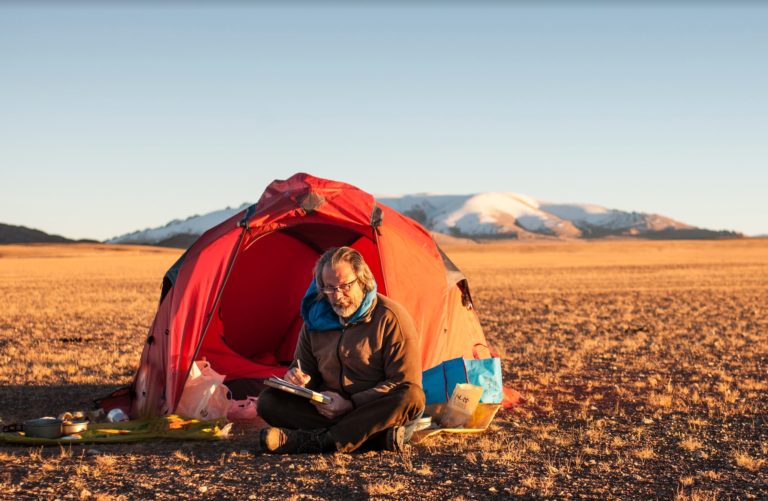
Peter: The idea to write the book happened along the way. We’d been to Antarctica and back and were in southern South America, and we’d had an interesting day and I thought to myself that I’d better take some notes so I can make captions. But as the notes became more and more extensive I thought, I should really be writing this down. I am enjoying a privilege that almost nobody on Earth gets to have; to be alone, completely alone, with the pristine earth around me. A remarkable privilege. Bev and I were experiencing Earth at its most magnificent, with the opportunity to drink it in completely. We were often on our own in completely remote places for weeks at a time. I want people to realise what we are sacrificing if we don’t protect these places.
Catch Peter talking about his book, To the Edges of the Earth, at the Franschhoek Literary Festival, 13–15 May. flf.co.za
Buy To the Edges of the Earth here
Peter & Bev’s 5 Wilderness Picks
1) Antarctica
It must be preserved for the very simple reason that it’s absolutely pristine…It’s like walking into creation, like going back in time.
2) Alaska and the Yukon
This region is so vast, and so extreme and it just has everything: waterfalls, glaciers, whales, bears…there is so much life.
3) The Namibian coastline
It’s a harsh environment, and you have to adapt to it before you enjoy it, but to find life in the desert is an absolute revelation. You’re not finding 400 elephants, but when you see 10 elephants walking out of the sand dunes, it’s just incredible.
4) The Arctic
We need to save it for the incredible bird colonies and polar bears. Seeing a polar bear for the first time is such an emotional experience.
5) The Tibetan Plateau
Tibet is culturally so strong, it’s in all forms of everyday life. The Tibetan Plateau is some of the most immense wilderness we found. If you draw straight lines on the map, it’s 1 200km long by 1 000km wide, and in that entire expanse there was one road and one railway. That’s half of South Africa with nothing in it. The people are all nomads, and it’s bordered by four of the most amazing mountains on Earth.









